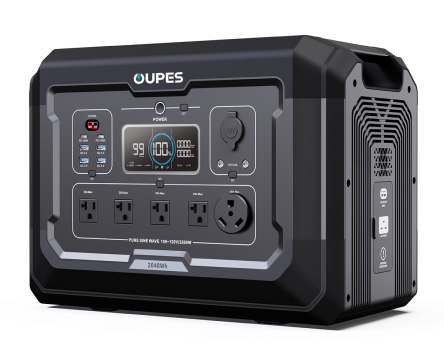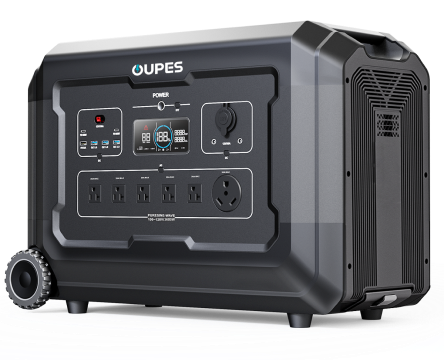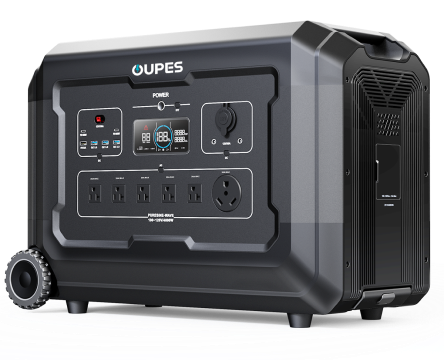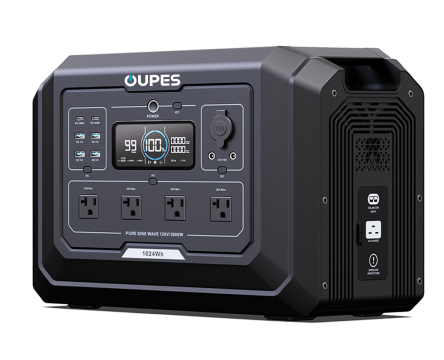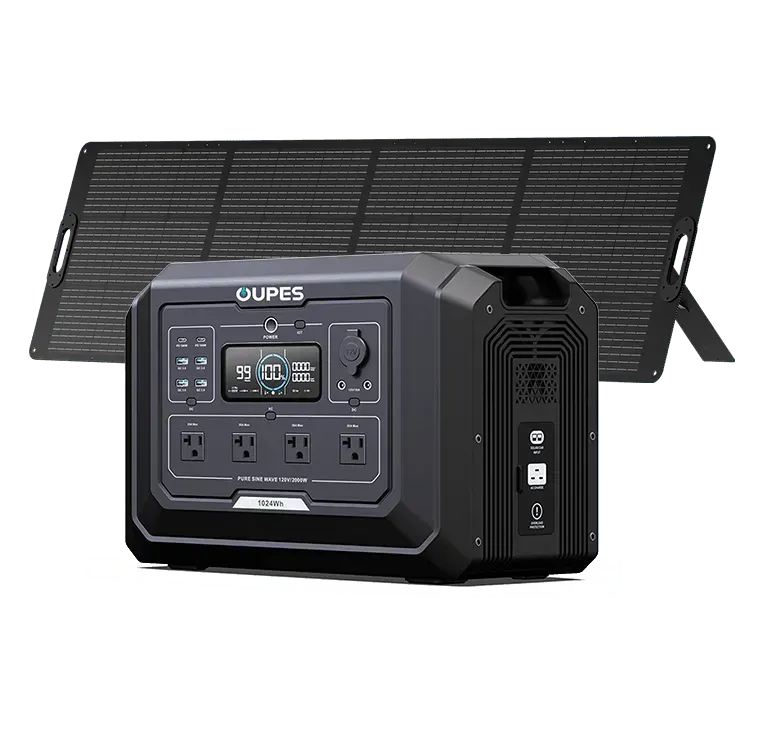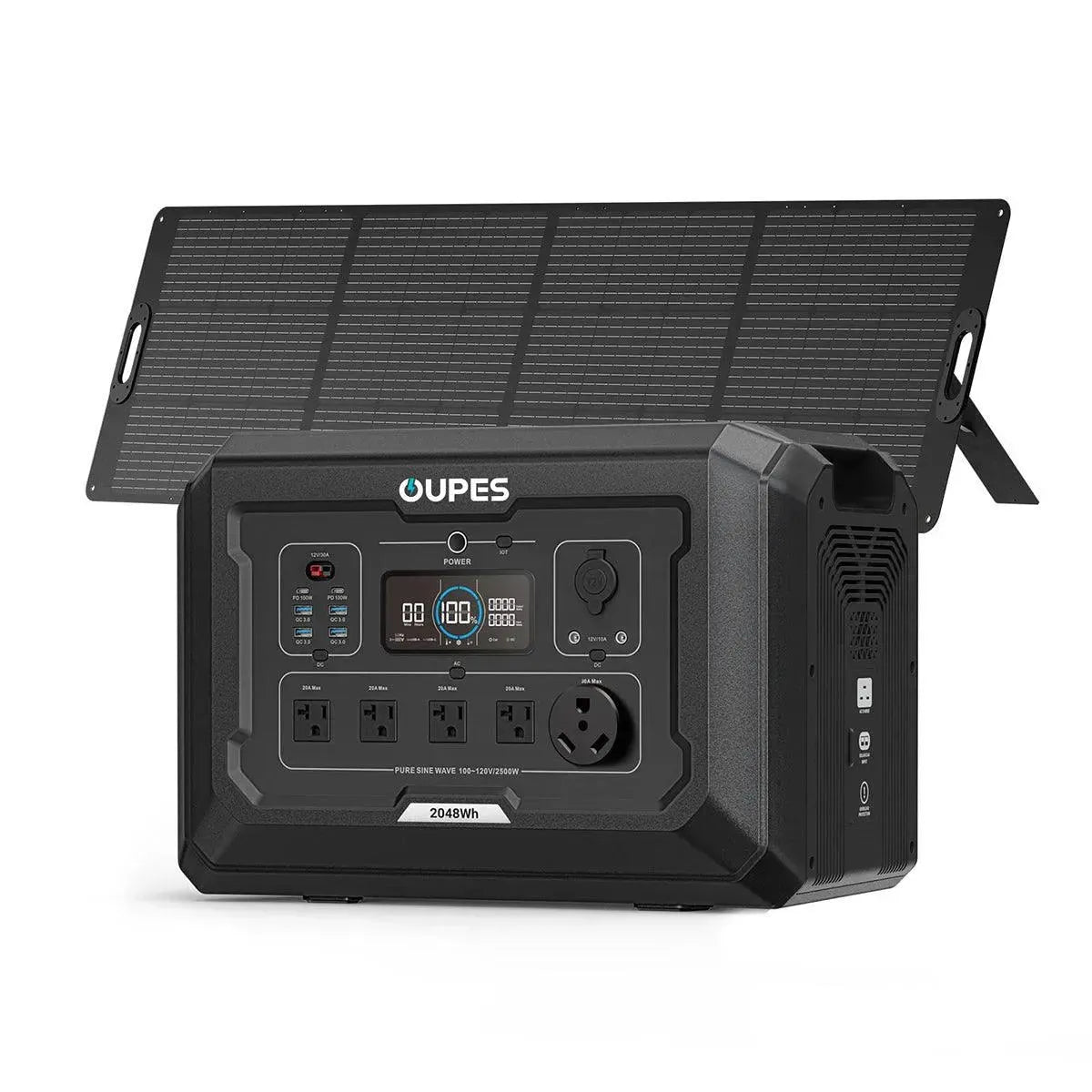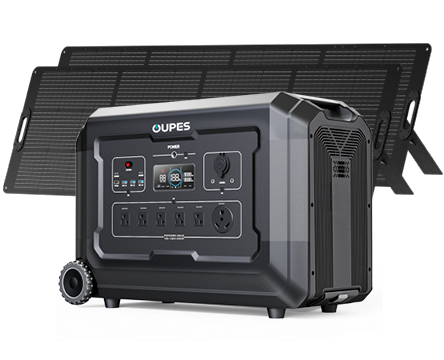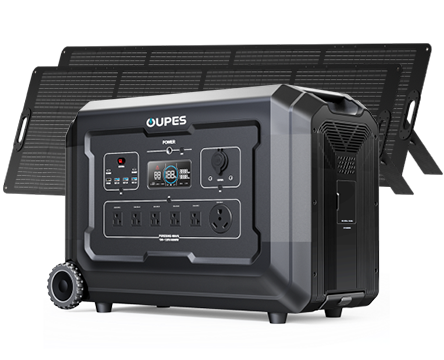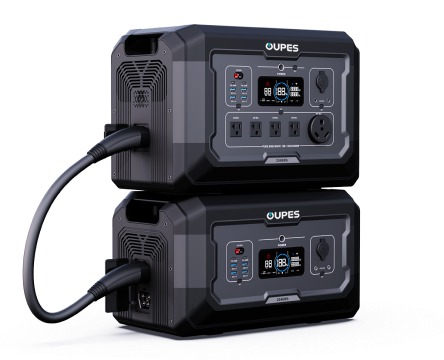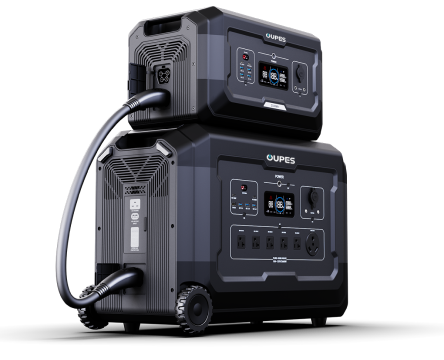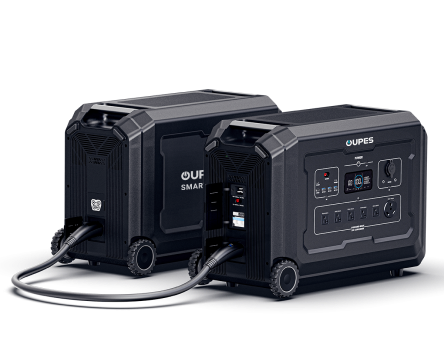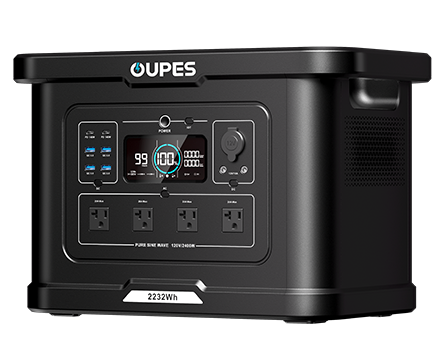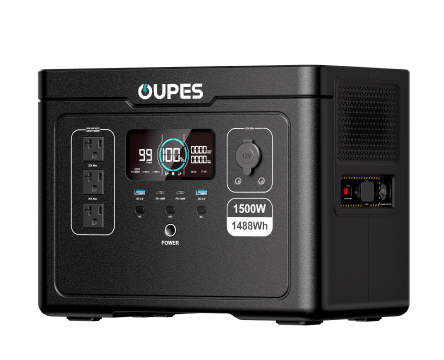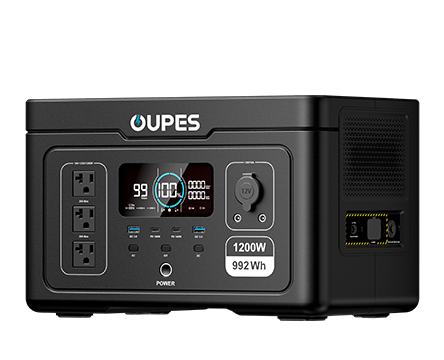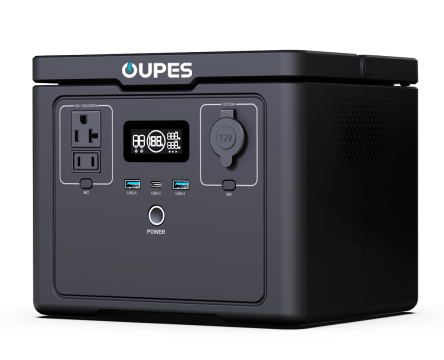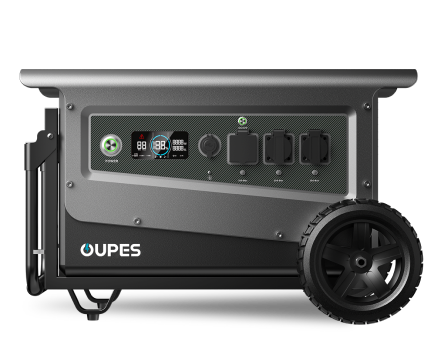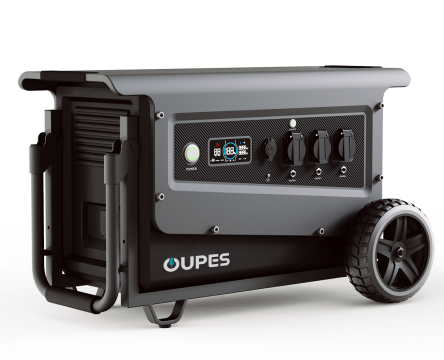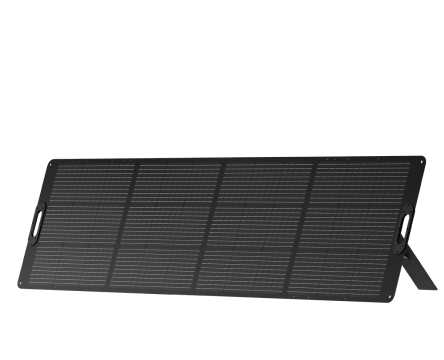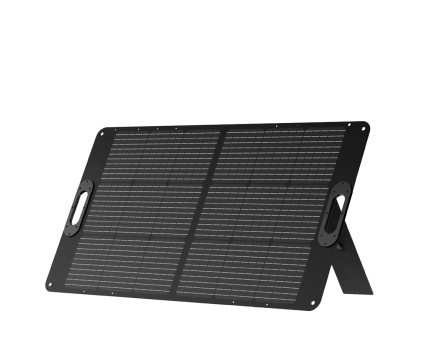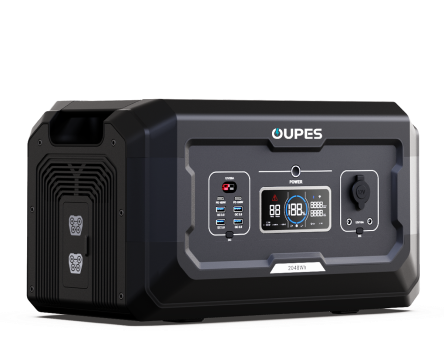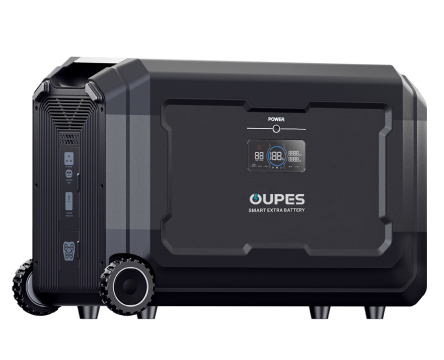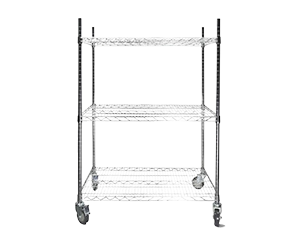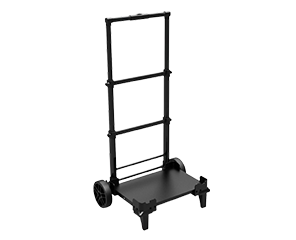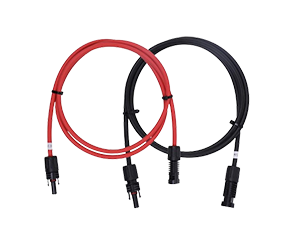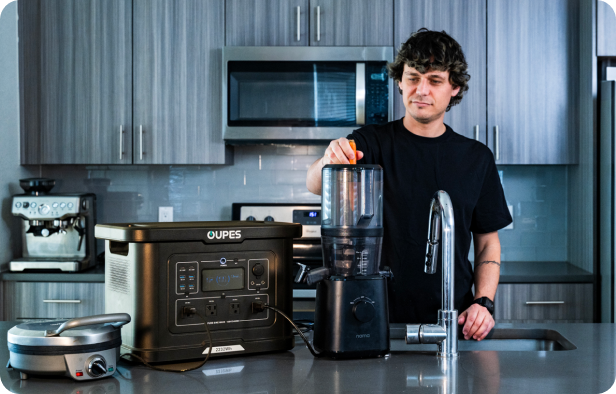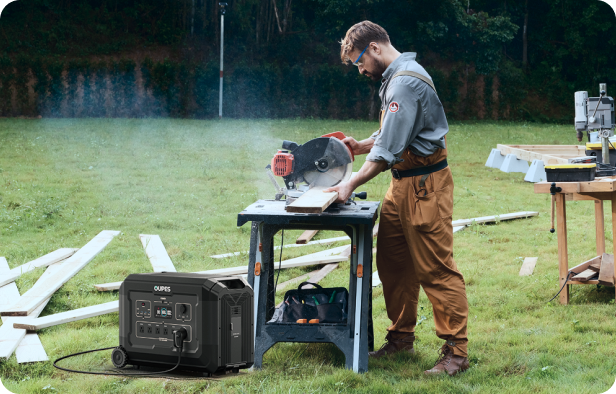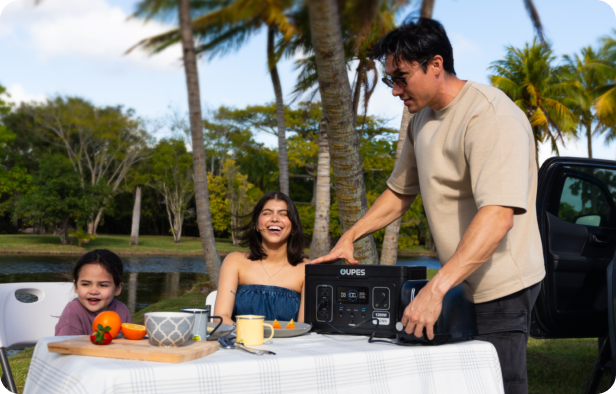Introduction: Understanding 2500W Power Stations
A 2500-watt power station offers an impressive balance between portability and performance. It's powerful enough to support essential home appliances during power outages, yet compact enough for off-grid adventures like RVing, camping, or van life.
Modern portable power stations — such as those developed by OUPES and other innovators — are equipped with advanced lithium batteries, pure sine wave inverters, and multiple output ports. These features make them a reliable source of clean, quiet energy whenever and wherever you need it.
Power Basics: Watts, Volts, and Amps Explained
Before we explore what a 2500-watt power station can run, let's review how power works. Understanding the relationship between watts, volts, and amps will help you estimate your energy needs accurately.
- Watts (W): Measure how much power an appliance uses.
- Volts (V): Represent the electrical potential or pressure of the power system.
- Amps (A): Indicate the amount of electrical current flowing.
The basic equation is:
Watts = Volts × Amps
For instance, if a coffee maker runs at 1000 watts on a 120V system, it draws roughly 8.3 amps. Knowing these relationships helps you manage your total load to avoid overloading your power station.
How Much Power Does 2500 Watts Provide?
A 2500W power station delivers up to 2500 watts of continuous power and usually has a surge capacity between 4000–5000 watts. That means it can safely run devices with a steady draw under 2500W, and briefly handle spikes from high-startup appliances like refrigerators or blenders.
However, the watt-hour (Wh) capacity — the size of the battery — determines how long those devices can run. For example, a 2500W-rated unit might have a 2000Wh or 3000Wh battery. The larger the capacity, the longer it can sustain your devices.
Appliances You Can Run at Home
A 2500W power station can run most household essentials during an outage. It's ideal for keeping food fresh, lights on, and communication devices charged. Here are examples of what it can handle:
- Refrigerator (120–200W): 10–15 hours of operation.
- Microwave (1000–1500W): Short cooking sessions for reheating meals.
- Wi-Fi router and laptop: Several days of use on a single charge.
- TV (100W): Over 20 hours of continuous entertainment.
- Electric kettle or coffee maker (1000–1500W): Suitable for short bursts of heating.
- CPAP machine (50–100W): 1–2 nights of operation, depending on battery capacity.
Appliances That Are Too Powerful
Some high-wattage devices exceed a 2500W power station's continuous output. Avoid running:
- Central air conditioning systems
- Electric water heaters
- Large space heaters (over 2500W)
- Welding machines
Appliances You Can Run While Camping or Traveling
When camping off-grid, a 2500W portable power station becomes your complete energy hub. It can power essential gear for cooking, lighting, and comfort while keeping your devices charged.
- Portable fridge/freezer (60–100W): 1–2 days of runtime.
- LED lights (10W): Multiple days of use.
- Electric grill or cooker (1200–1500W): Short meal prep sessions.
- Drone batteries and cameras: Recharge multiple times.
- Electric fan (50W): 30+ hours of continuous operation.
- Laptop, phone, and GPS units: All-day power supply.
Because it provides silent, clean energy, you can use it inside your tent, camper, or cabin without worrying about fumes — something impossible with a gas generator.
Wattage Comparison Table for Common Devices
| Appliance | Typical Wattage | 2500W Power Station Compatible? |
|---|---|---|
| Smartphone Charger | 10W | ✔ Yes |
| Laptop | 60W | ✔ Yes |
| Mini Fridge | 100W | ✔ Yes |
| Microwave | 1200W | ✔ Yes |
| Coffee Maker | 1500W | ✔ Yes |
| Hair Dryer | 1800W | ✔ Yes (Short Use) |
| Space Heater | 2500W+ | ✖ No |
| Air Conditioner | 3500W+ | ✖ No |
Using a 2500W Power Station with Solar Generators
Pairing a 2500W power station with solar panels transforms it into a complete solar generator system. This setup allows you to recharge the battery directly from sunlight, enabling continuous off-grid operation.
Benefits of Solar Charging
- Renewable and eco-friendly energy source.
- Silent operation — ideal for camping and home backup.
- Reduces reliance on grid or fuel-based systems.
Typical Setup
A 2500W power station often supports solar input between 400–800W. That means with 400W of solar panels, you can recharge a 2000Wh unit in about 5–6 hours under full sunlight.
Many modern models, including those by OUPES, use MPPT (Maximum Power Point Tracking) technology, ensuring fast and efficient solar recharging even in variable light conditions.
How to Estimate Runtime and Power Duration
You can estimate how long your power station will run a device using this simple formula:
Runtime (hours) = Battery Capacity (Wh) × 0.85 ÷ Device Power (W)
The 0.85 factor accounts for inverter efficiency losses.
Example 1: Running a 100W Laptop
A 2500W station with a 2000Wh battery: 2000 × 0.85 ÷ 100 = 17 hours of runtime.
Example 2: Running a 1000W Microwave
2000 × 0.85 ÷ 1000 = 1.7 hours (though typical use is only a few minutes per session).
Example 3: Running a 60W Mini Fridge
2000 × 0.85 ÷ 60 ≈ 28 hours before recharging.
Remember: actual results vary depending on temperature, inverter quality, and device efficiency.
Tips for Getting the Most Out of Your Power Station
1. Prioritize Essential Loads
Use your 2500W power station primarily for essential appliances — food preservation, lighting, and communication — to extend runtime.
2. Charge During the Day
If using solar panels, recharge your station between 10 AM and 3 PM when sunlight is strongest.
3. Use DC Outputs When Possible
DC-to-DC connections (like USB or car ports) are more efficient than converting to AC, saving 10–15% of energy.
4. Avoid Overloading
Always check your appliance's wattage. Running multiple high-power devices simultaneously may exceed the inverter's continuous capacity.
5. Store Properly
For long-term storage, keep the battery charged between 50–80% and avoid extreme heat or moisture.
Safety and Maintenance Considerations
- Keep your power station on a flat, ventilated surface during use.
- Do not use near flammable materials.
- Unplug devices once fully charged to prevent unnecessary load.
- Regularly update firmware if your unit supports it.
- Use only compatible solar panels and cables recommended by the manufacturer.
FAQ
1. What can a 2500W power station run at the same time?
You can typically run several medium-power devices, such as a refrigerator (150W), laptop (60W), and TV (100W) simultaneously — staying well below the 2500W limit.
2. Can it power a microwave or coffee maker?
Yes, most microwaves and coffee makers fall between 1000–1500W. The power station can handle these easily for short durations.
3. How long will a 2500W power station last?
That depends on its battery capacity. A 2500W power station with 2000Wh can power a 500W appliance for about 3.4 hours.
4. Is it suitable for RV or camping use?
Absolutely. It's powerful enough to run fridges, induction cookers, and lighting systems while remaining portable and quiet.
5. Can I recharge it with solar panels?
Yes. Pairing it with 400–800W solar panels creates a sustainable power system that recharges during the day for use at night.
6. Is it safe to use indoors?
Yes. Unlike fuel-based generators, portable power stations produce no emissions or noise, making them safe for indoor and tent use.
7. What battery type do 2500W power stations use?
Most modern models use LiFePO4 batteries — known for long lifespan (over 3000 cycles), stability, and safety.
8. What if my appliance needs more than 2500W?
It won't run. You'll need a higher-capacity unit or reduce simultaneous load to stay under the continuous wattage limit.
9. Can I use a 2500W power station for emergency backup?
Yes, it's ideal for short-term power outages, supporting essentials like lights, Wi-Fi, and refrigeration.
10. How do I maximize its lifespan?
Keep it clean, avoid full discharges, use within rated limits, and store it partially charged if unused for long periods.

